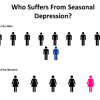- Empty cart.
- Continue Shopping
A Guide to Understanding Respiratory Issues in Men

Respiratory health is paramount for a high quality of life, and it’s crucial to recognize that men, like women, can face specific challenges in this area. From smoking-related conditions to occupational exposures, understanding respiratory issues in men is essential for prevention, early detection, and effective management.
1. Smoking and Lung Health
a. Smoking-Related Conditions
Smoking is a significant risk factor for a range of respiratory issues in men. Chronic obstructive pulmonary disease (COPD), bronchitis, and lung cancer are all closely linked to tobacco use. Encouraging smoking cessation is paramount for preventing and managing these conditions.
b. Secondhand Smoke
Secondhand smoke exposure is also a concern, particularly for non-smoking men living with smokers. It can contribute to various respiratory ailments, including asthma, respiratory infections, and lung cancer. Creating a smoke-free environment is essential for overall respiratory health.
2. Occupational Exposures
Many men work in environments with potential respiratory hazards, such as dust, chemicals, and fumes. Occupational lung diseases, including pneumoconiosis (e.g., coal worker’s pneumoconiosis) and asbestosis, are a significant concern. Proper protective measures, such as wearing masks and ensuring adequate ventilation, are crucial for minimizing risks.
3. Asthma
While asthma affects people of all genders, it can present differently in men. Men may be more prone to occupational asthma triggered by workplace irritants. Recognizing asthma symptoms, such as wheezing, shortness of breath, and chest tightness, is vital for timely intervention and management.
4. Sleep Apnea
Sleep apnea is a condition characterized by interrupted breathing during sleep, leading to poor sleep quality and potential health complications. Men, particularly those who are overweight or obese, are at higher risk. Effective treatment options, such as continuous positive airway pressure (CPAP) machines, can significantly improve sleep apnea symptoms.
5. Lung Cancer
Lung cancer is a major concern for men, with smoking being the leading cause. Early detection through regular screenings and awareness of potential symptoms, such as persistent cough, chest pain, and unexplained weight loss, is crucial for improved treatment outcomes.
6. Allergies and Sensitivities
Allergic respiratory conditions, such as hay fever and allergic asthma, can significantly impact men’s respiratory health. Identifying allergens and implementing strategies to minimize exposure, such as using air purifiers or allergen-proofing the home, can provide relief.
7. Physical Fitness and Respiratory Health
Maintaining a healthy lifestyle, including regular exercise and a balanced diet, is essential for overall respiratory well-being. Exercise helps improve lung function and cardiovascular health, reducing the risk of respiratory conditions.
8. Seeking Prompt Medical Attention
Encouraging men to seek medical attention for respiratory symptoms is crucial for early diagnosis and intervention. Delaying treatment can lead to more severe complications and reduced treatment efficacy.
Finally, understanding respiratory issues specific to men is essential for promoting a healthy and fulfilling life. By addressing risk factors, implementing preventive measures, and seeking timely medical attention, men can take proactive steps towards optimal respiratory health. Encourage open communication with healthcare providers and promote healthy lifestyle choices to support men in maintaining strong respiratory well-being. Remember, early detection and intervention are key to effectively managing respiratory conditions and ensuring a high quality of life.








